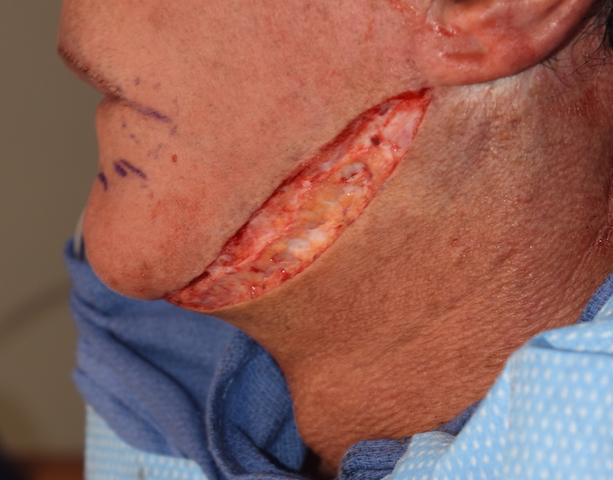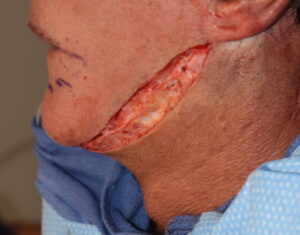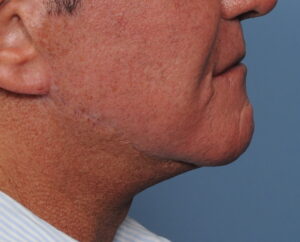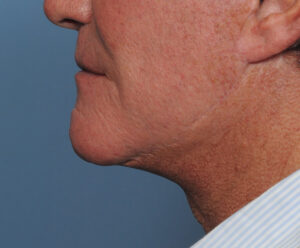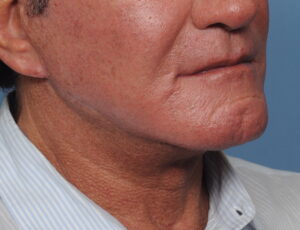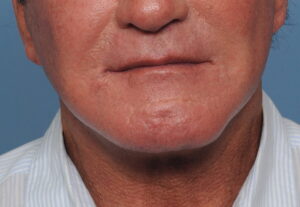Background: The effectiveness of lower facelift surgery is based on the concepts of tissue mobilization and repositioning. This means that the loose face/jawline/neck tissues are moved back to a location where the redundancies can be excised and the scars placed in a relatively hidden location. (ears) While extremely effective and well chronicled with a long history of use, the facelift always remains a challenge in execution in many men.
Because of the frequent lack of hair camouflage around the ear the extent of the pre – and postauricular incisions in men often needs to be more limited. How far away from the ear these incisions can aesthetically extend does create some limitations in what the procedure can accomplish. Fortunately most men do not desire a ‘maximum’ facelift effect which can look more unnatural on them than women. Thus for most men even a more limited jowl tuck effect with central neck work (submentoplasty) will produce a satisfactory result.
The effectiveness of the traditional male facelift becomes more challenging in subsequent facelift surgeries or when they desire maximal jawline reshaping. (the clearest demarcation between the face and the neck) The pullback of subsequent facelifts loses some of its effectiveness and can create an unnatural tension line along the jawline and even pull down effect on the ear lobe. A rare alternative approach offers a different method of jawline tissue excision and lift.
Case Study: This 70 year-old plus male had a history of two prior facelift surgeries (and one subsequent direct jawline excisional procedure) which were very successful. But as he looked to have further refinement along the jawline there was no more tissue that could be pulled back towards the ear. The skin was too tight to allow for any more mobilization and it would not have made the jawline and submental chin area look any better.
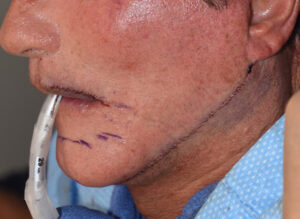
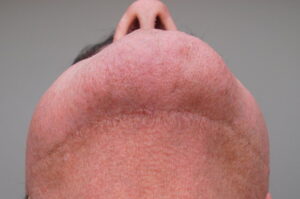
While the procedure was effective, as one would expect because it directly removed the loose tissue where it laid, the ultimate question is how did the jawline scar subsequently look. To the patient the scars were very acceptable and provided the improvement he desired.

The jawline necklift is conceptually similar to that of a direct necklift in which the scars are moved from the ears onto the neck and direct excision is done. The reasons to do so are also the same…the patient wants to avoid extensive ear scarring, desires a less invasive procedure and recovery and is willing to accept a non-traditional scar location. In the older male with beard skin such scars may be acceptable in the well informed patient.
Case Highlights:
1) Secondary or tertiary facelift surgery in men may need a different vector of pull/skin excision than what the original procedures provided.
2) The jawline necklift , in the properly qualified patient, can provide a smoother jawline by direct excision of excess tissues from side to side.
3) The jawline necklift leaves a scarline along the jawline (preferably under it) whose acceptability is patient dependent.
Dr. Barry Eppley
Indianapolis, Indiana

